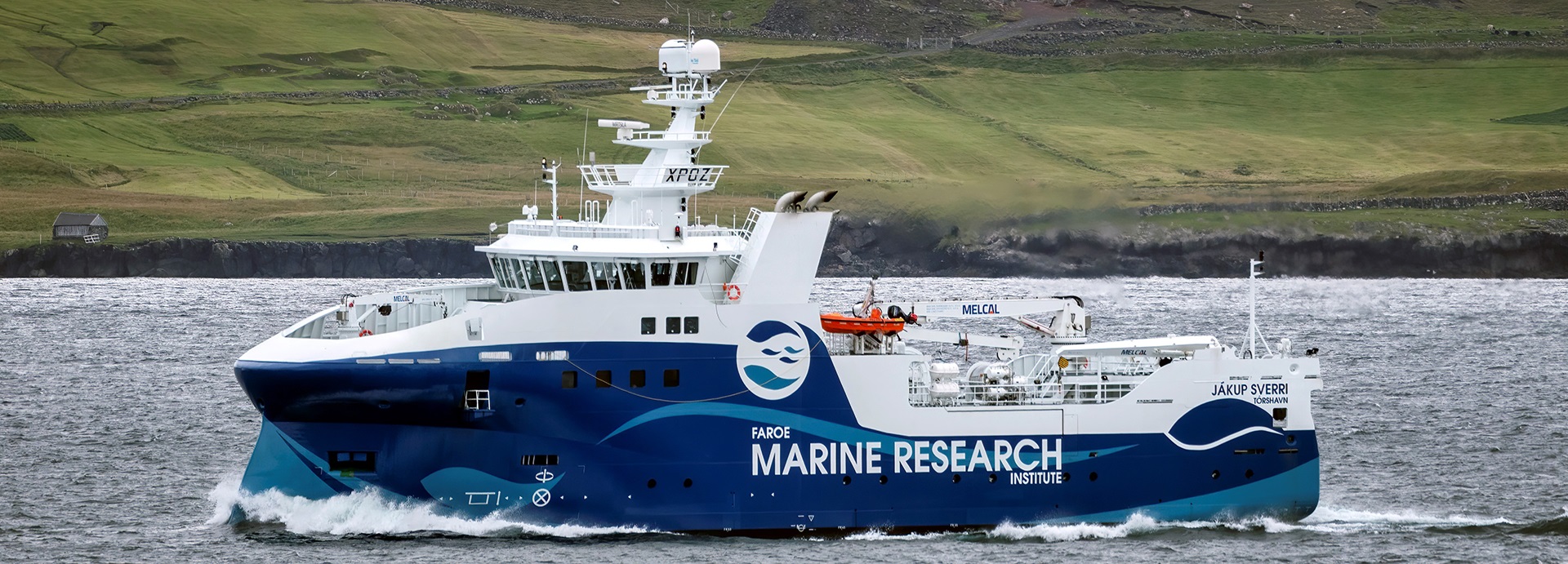

Situated midway between Norway and Iceland in the North Atlantic, the Faroe Islands are an autonomous territory where fishery products account for around 90% of all exports. Because the fishing industry is so important for the Faroe Islands’ economy, it’s critical that the government has accurate information about the size, composition and location of fish stocks in the surrounding waters. When the Faroe Marine Research Institute tendered for a new research vessel to collect this data, it was therefore essential to acquire a high-performance ship with the necessary reassurance of ultra-silent propulsion.
In 2017, Wärtsilä was entrusted to supply the complete propulsion system for the vessel. The MEST Shipyard and Wärtsilä worked together to design a solution that would provide the most effective underwater radiated noise (URN) performance in accordance with DNV GL’s stringent SILENT-R notation. This solution includes two double low-SBN (structure-borne noise) 8-cylinder 20DG engine sets, equipped with selective catalytic reduction (SCR) to meet IMO Tier III emission regulations. It also includes a specially designed low-SBN propulsion motor with double windings for redundancy, fed by two IGBT-type active front-end variable frequency drives.
The propulsion motor was attached to the shaft line using a purpose-built elastic coupling for driving a silent propeller, which was designed using advanced computational fluid dynamics (CFD) software. This ensures that the vessel will not produce any noise from potential cavitation until it reaches a speed of 11 knots. The high cavitation inception speed makes the propeller a significant contributor to the ship’s exceptionally low URN.

Collaboration with MEST Shipyard through the entire process
The new vessel ‘Jákup Sverri was designed by the MEST Shipyard, which has been responsible for the entire building process including concept design, detailed design, various calculations as well as project management.
Low URN exceeds expectations
In September 2020, Project Manager Rene Veldstra reported that the Jákup Sverri had successfully completed sea acceptance trials for URN, measured by DNV GL, and the vessel is expected to begin operations in autumn 2020 to replace the Magnus Heinason, which had been used for research since 1978. The new vessel will play an important role in the Faroe Islands’ fisheries management system, which aims to enable more sustainable and economically viable use of resources by the Faroese fishing industry.

Simon Riddle, General Manager Navy and Research Vessels at Wärtsilä says, “Thanks to our extensive experience in this field, we were able to set up the mounting of the gensets and other rotating machinery to minimise low-frequency structural vibrations that can pass through the hull of the ship. We also eliminated higher-frequency noise from the propeller through our custom OPTI design process, which was supported by CFD simulations. We are very proud of our achievement, and thankful to MEST for placing their trust in our capabilities.
Wärtsilä’s all-in-one solution for reducing the URN of the Jákup Sverri, along with the company’s ability to integrate the various technologies, has resulted in a vessel that achieves the DNV SILENT-R requirements with good margins, making it ideal for its intended use as a research vessel.
Wider Wärtsilä portfolio reduces risk – and emissions
Riddle highlights that having a single supplier responsible for the ship’s entire URN offers unique and valuable benefits for the operator: “Traditionally we would supply individual elements of the propulsion system such as the propeller or the gensets; this is the first project where we’ve provided the entire propulsion solution. This is a major risk mitigator for both the shipyard and the vessel owner because we take responsibility for the entire system, which has been designed as one consistent whole rather than made up of parts sourced from different suppliers.”

As well as providing the required levels of noise reduction, Wärtsilä’s propulsion solution conforms with IMO Tier III emission regulations. As Veldstra explains, this is another example of how the MEST shipyard has mitigated risks by using a single supplier: “Low emissions are ensured by having one OEM for both engines and SCRs, with all certification completed before installation – this essentially eliminates the need for additional onboard tests with the SCRs and engines connected. We basically take care of the whole propulsion system from noise to emissions,” he concludes.
Challenge
- Minimise URN
- Need to meet international standards for emissions
- Minimise the risk of technical and mechanical issues
Solution
- Sound dampeners and custom design for propeller and equipment mounting
- Engines and SCR system designed to operate seamlessly together
- Single supplier for the complete propulsion system
Benefit
- Accurate research data that is not compromised by noise
- Guaranteed emissions performance in line with IMO Tier III regulations
- One point of contact for a single holistic propulsion system



